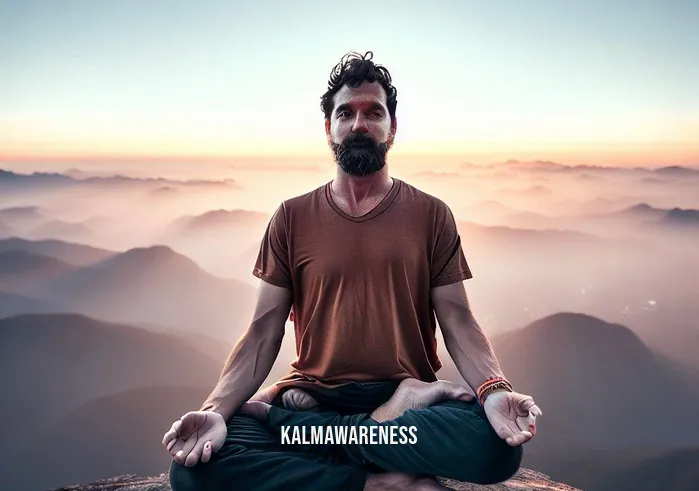Exploring the Flamingo Yoga Pose
Welcome to the world of yoga, where serenity meets strength and flexibility. In this article, we’re delving into the captivating realm of the Flamingo Yoga Pose, a graceful posture that not only strengthens your body but also cultivates balance and mindfulness. Get ready to unfold the petals of this mesmerizing pose as we guide you through its essence, benefits, and step-by-step practice.
Description | Explanation
- Pose Name: Flamingo Yoga Pose
- Original Name: Phoenicopteridae Asana
- Difficulty Level: Intermediate
- Pose Category: Standing Balances
When you think of a flamingo, you envision a creature that stands tall and balanced on one leg, immersed in its natural habitat. The Flamingo Yoga Pose draws inspiration from the elegant stance of these beautiful birds, encouraging practitioners to find their inner poise and grace.
Exercise Duration
- For Beginners: Start by holding the pose for about 20-30 seconds on each leg.
- For Advanced Practitioners: Challenge yourself by extending the duration to 60 seconds on each leg.
Step-by-Step Guide
- Begin in Mountain Pose: Stand tall with your feet together and your hands resting at your sides.
- Shift Your Weight: Shift your weight onto your left foot as you bend your right knee, bringing your right foot towards your right glute.
- Catch Your Foot: Gently reach back with your right hand and grab hold of your right ankle.
- Engage Your Core: Draw your navel in towards your spine to stabilize your torso.
- Maintain a Straight Spine: As you find your balance, ensure your spine remains straight, and your chest is lifted.
- Extend Your Leg: Begin to slowly extend your right leg back behind you, maintaining a slight bend in your knee.
- Lean Forward: As you extend your leg back, lean your upper body forward, parallel to the ground. Your extended leg and upper body should create a T shape.
- Find Your Focus: Fix your gaze on a stable point in front of you to enhance your balance and concentration.
- Hold and Breathe: Hold the pose for the desired duration while taking slow and deep breaths. Feel the connection between your standing leg and the extended leg.
- Release the Pose: Gently release your right foot and return to the Mountain Pose.
The Flamingo Yoga Pose offers a graceful challenge that strengthens your leg muscles, improves your posture, and enhances your overall body awareness. As you practice this pose, remember that finding balance both on and off the mat is a journey that brings harmony to your life.
Stay tuned for the next part of our article, where we’ll delve deeper into the benefits of the Flamingo Yoga Pose and explore its connection to the broader world of yoga. Let’s continue this enlightening journey together!
“Balance is not something you find, it’s something you create.”
- Jana Kingsford
@
Exploring the Benefits of the Flamingo Yoga Pose
As we continue our journey into the captivating world of yoga, let’s dive into the myriad of benefits that the Flamingo Yoga Pose brings to both body and mind. This graceful posture not only challenges your physical strength but also offers a range of advantages that enhance your overall well-being.
Embracing the Flamingo Yoga Pose
When you gracefully transition into the Flamingo Yoga Pose, you’re not just mimicking the elegance of a flamingo; you’re inviting a host of benefits into your practice. Let’s spread our wings and explore the advantages this pose offers:
Strengthens Leg Muscles
The Flamingo Yoga Pose targets your leg muscles, from your quadriceps to your calf muscles. The act of balancing on one leg engages these muscles, building endurance and stability.
Improves Balance and Focus
Maintaining equilibrium in the Flamingo Pose demands intense concentration. This cultivates your ability to focus and enhances your mind-body connection, which can extend beyond the mat into your daily life.
Enhances Posture
The pose encourages you to stand tall with an elongated spine. By practicing good posture in this pose, you train your body to carry itself with grace and alignment in everyday activities.
Increases Hip Flexibility
As you lift and extend your leg, you gently stretch the muscles around your hips. Over time, this can lead to improved hip flexibility and a greater range of motion.
Boosts Mindfulness
Balancing on one leg requires mindfulness and presence. The Flamingo Yoga Pose becomes a moving meditation, guiding you away from distractions and into the present moment.
Who Should Avoid the Flamingo Yoga Pose?
While the Flamingo Pose brings a wealth of benefits, there are certain situations where it’s recommended to avoid this pose:
- Recent Injuries: If you have injuries in your legs, hips, or ankles, it’s best to skip this pose until you’ve fully healed to prevent any strain or discomfort.
- Balance Issues: If you struggle with balance or dizziness, approach this pose with caution. Consider practicing near a wall or using a prop for support.
Variations for Different Experience Levels
Yoga is about meeting yourself where you are. Here are variations of the Flamingo Yoga Pose to suit various experience levels:
- Beginner: Use a wall or a chair for support. Rest your fingertips on the wall or hold onto the back of the chair as you work on your balance.
- Intermediate: Practice the pose as described in the previous chapter, gradually working on extending your leg and leaning forward.
- Advanced: Elevate the challenge by closing your eyes while in the pose, which intensifies your focus and balance.
@
The Flamingo Yoga Pose: Unveiling Its Historical Roots and Spiritual Essence
Welcome back to the enchanting journey through the Flamingo Yoga Pose. As we step into the final part of our exploration, we delve into the rich history, spiritual significance, and intricate details that make the Flamingo Pose a truly transformative posture.
Tracing the Historical Origins
The Flamingo Yoga Pose finds its roots in ancient yogic practices, where poses were often inspired by the natural world. The posture draws parallels with the poised stance of flamingos, symbolizing grace and balance. While it may not have a direct mention in ancient texts, the essence of finding equilibrium in nature’s beauty has always been a part of yoga’s ethos.
Spiritual Reflections
Beyond its physical benefits, the Flamingo Yoga Pose holds spiritual significance that resonates with the essence of yoga. This pose serves as a reminder of the delicate interplay between strength and vulnerability, much like the juxtaposition of a flamingo’s slender frame against its resilience in the wild. The act of finding stability on one leg can be seen as a metaphor for finding one’s center in the midst of life’s challenges.
Tips for a Fulfilling Practice
To truly embrace the essence of the Flamingo Yoga Pose, consider these tips to enhance your practice:
- Mindful Breathing: Focus on your breath as you hold the pose. Inhale deeply to center yourself and exhale any tension.
- Gaze Fixation: Choose a fixed point in front of you to maintain balance and concentration. This will enhance your steadiness and inner poise.
- Engage Core Muscles: Draw your core muscles gently inwards to stabilize your torso and support your spine.
- Warm-Up: Before attempting the Flamingo Pose, warm up your body with gentle stretches to prepare your muscles for the balancing act.
Avoid These Common Mistakes
To make the most of your Flamingo Yoga Pose practice, steer clear of these errors:
- Overarching the Back: Avoid leaning too far forward, which can cause strain on your lower back.
- Locked Knees: Keep a slight bend in your standing knee to prevent hyperextension.
- Rushed Transitions: Take your time while entering and exiting the pose to maintain stability.
Modifications for All Practitioners
The Flamingo Pose can be adapted to accommodate various body types and abilities:
- Injuries: If you have ankle or knee injuries, perform the pose near a wall for support.
- Limited Flexibility: Use a strap looped around your ankle to hold your leg up if you can’t reach your foot with your hand.
Complementary Poses
Enhance your practice by incorporating poses that complement the Flamingo Yoga Pose:
- Tree Pose (Vrikshasana): Another balancing pose that strengthens your legs and enhances focus.
- Warrior II (Virabhadrasana II): This pose builds leg strength and improves stamina, preparing you for the challenges of the Flamingo Pose.
As we conclude our journey through the Flamingo Yoga Pose, we invite you to continue your exploration of yoga’s diverse and transformative world. Just as a flamingo finds its balance amidst changing waters, may you discover your inner equilibrium through your practice.
Join us in future articles as we unravel more captivating yoga postures and their profound impacts on body, mind, and soul.




